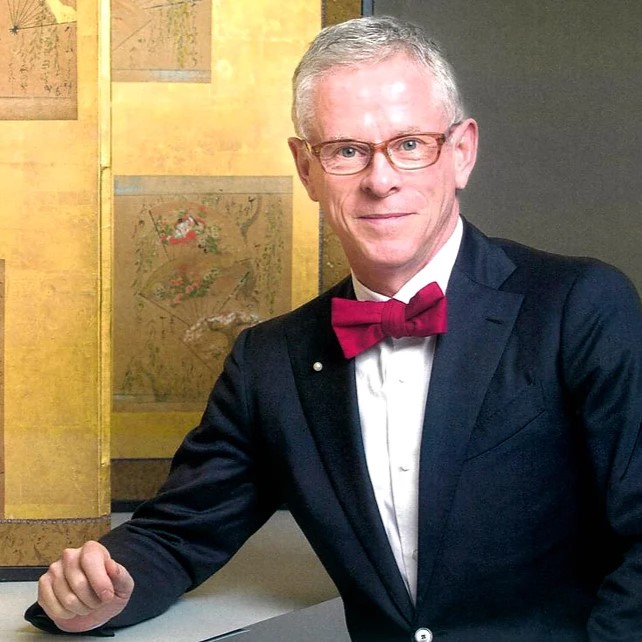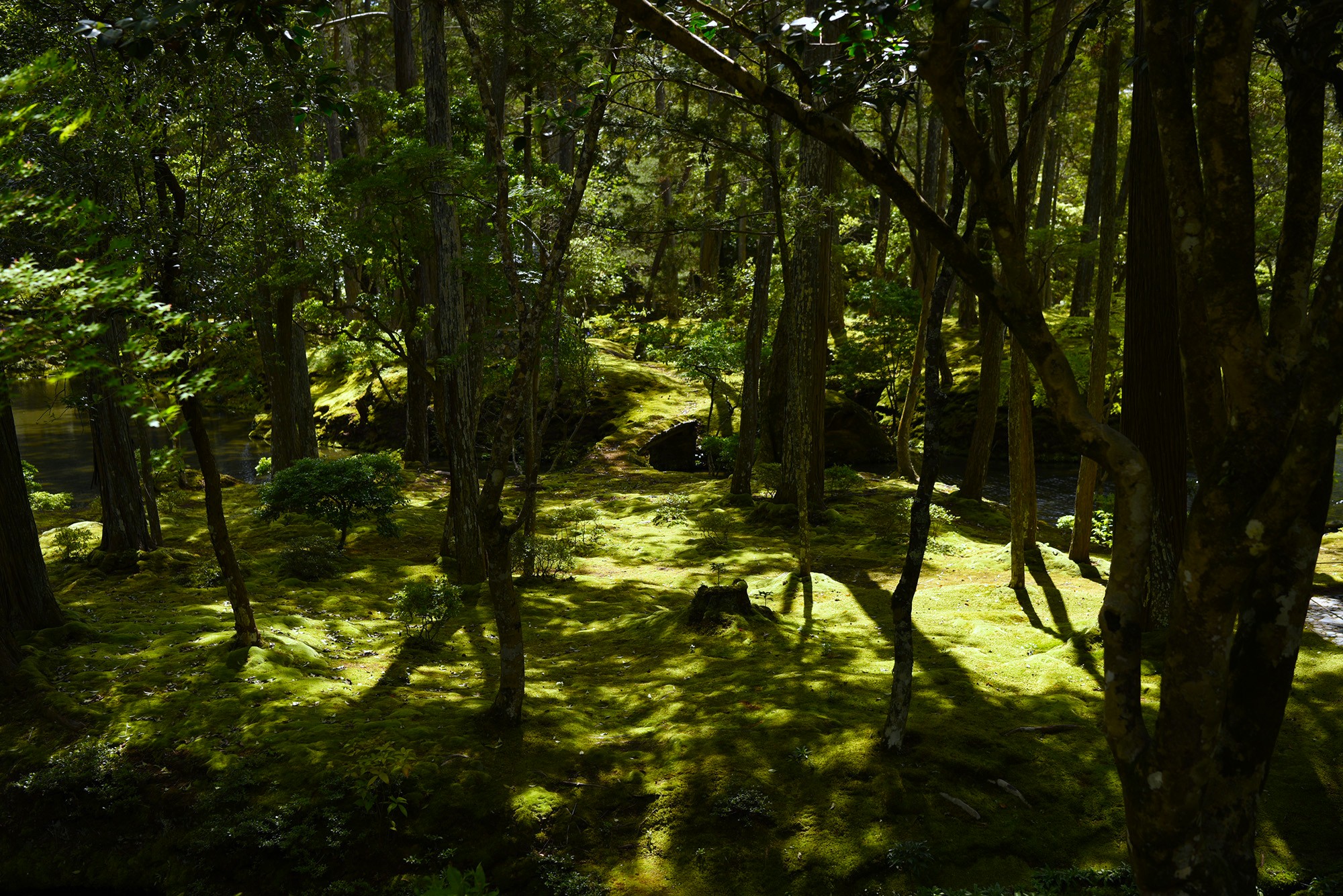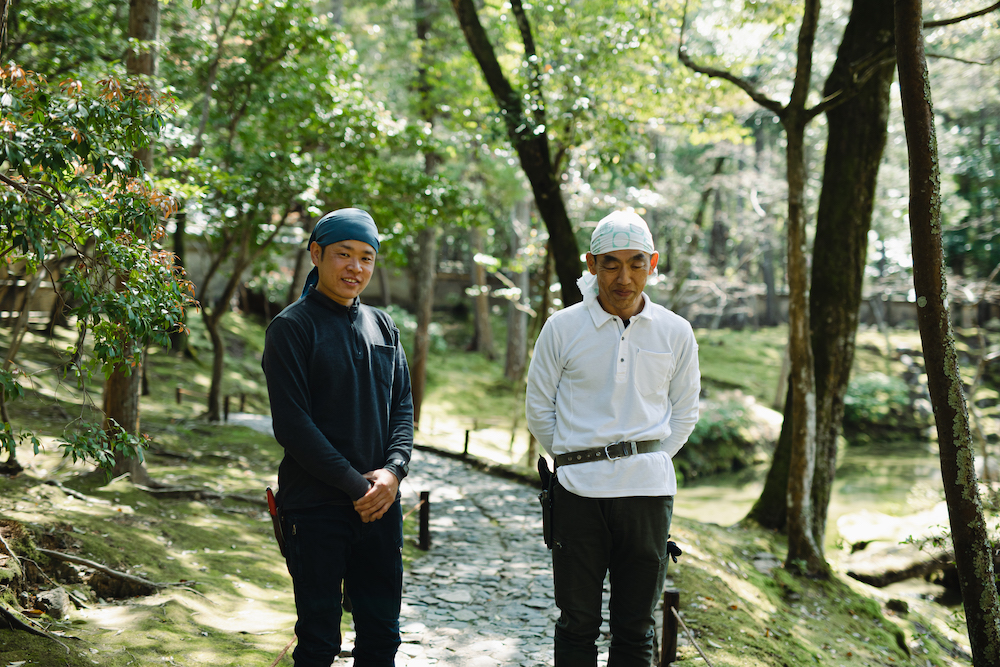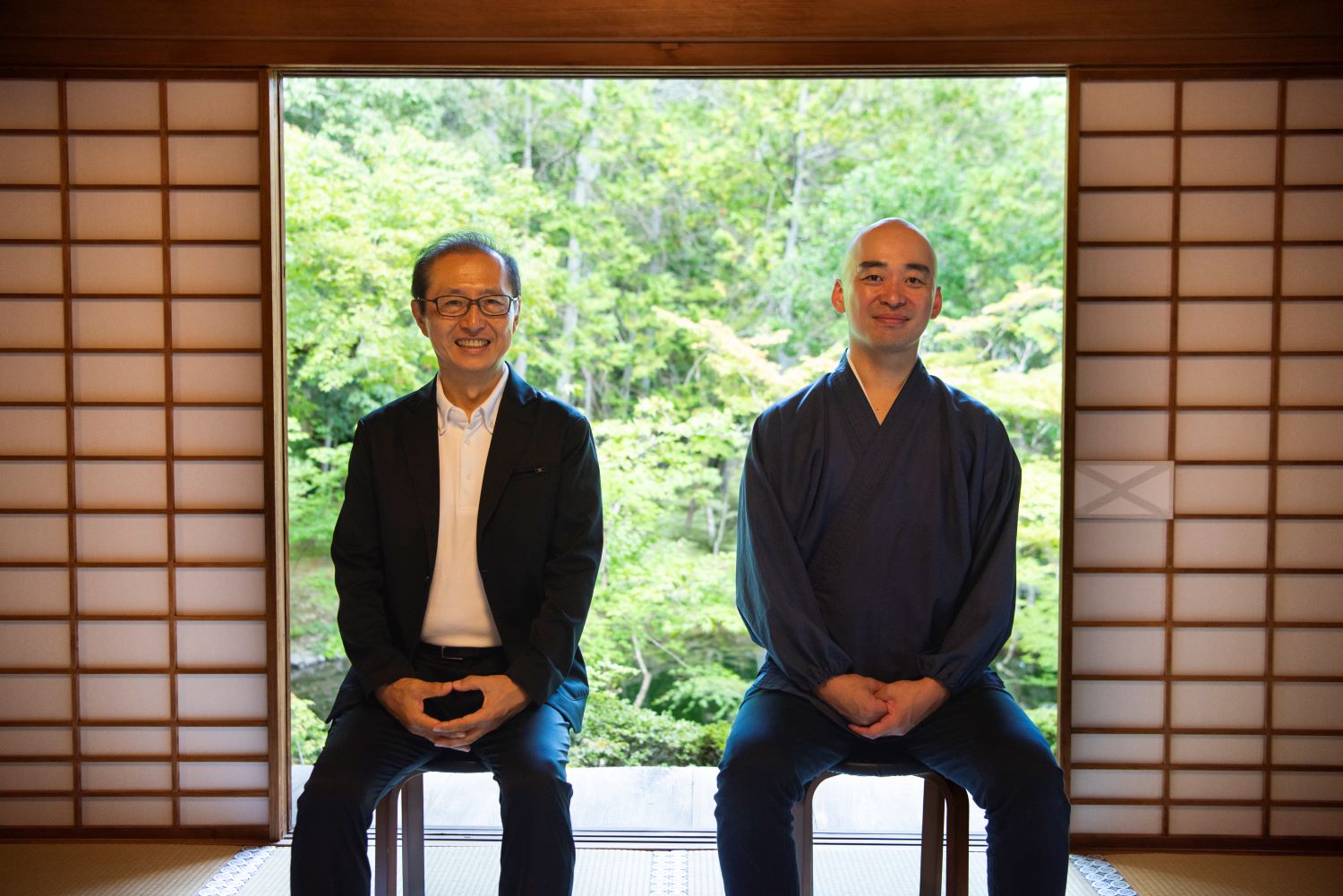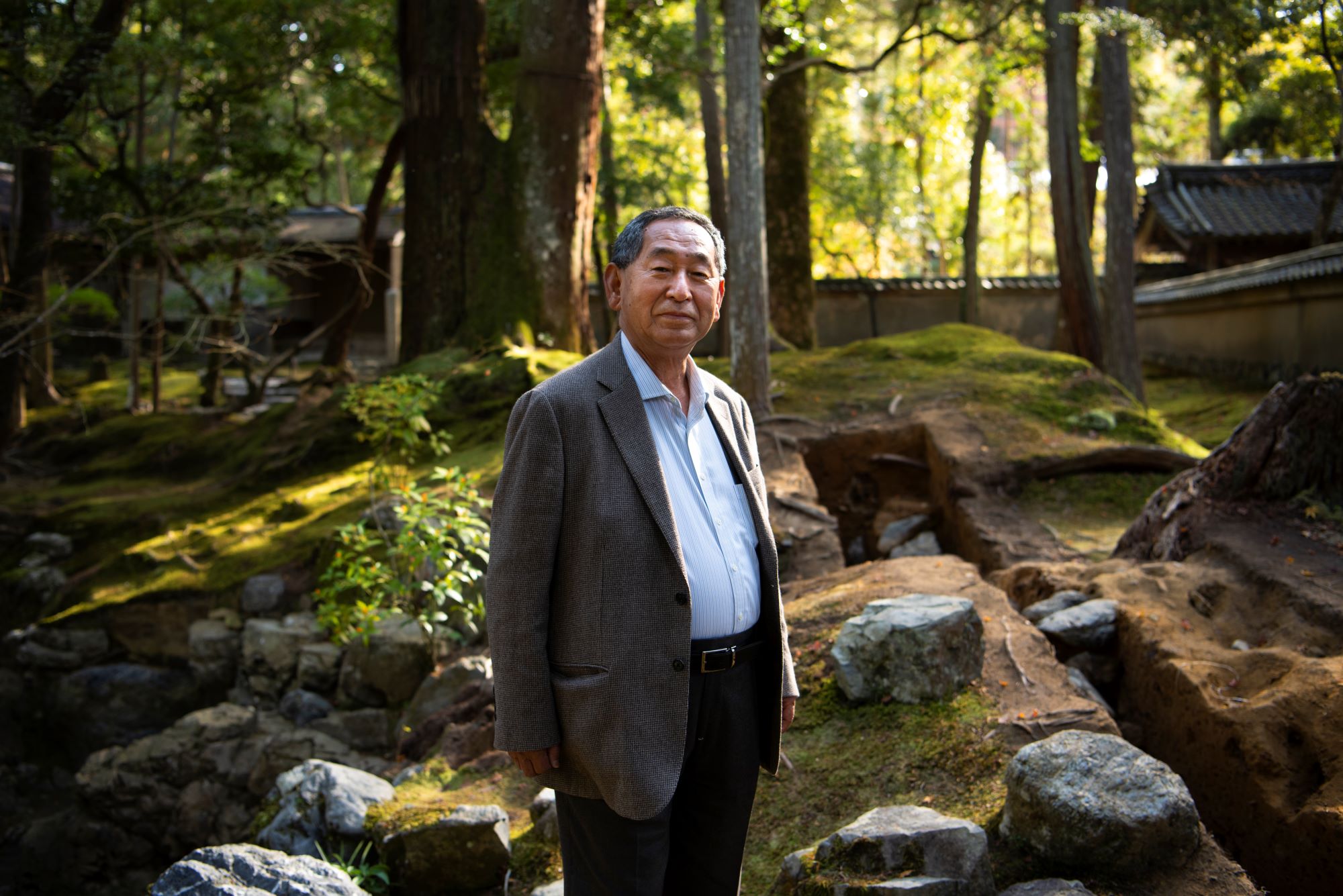2025.10.20
Winds of Gold—A Hundred Views of Saihoji Vol. 18
Peter MacMillan / a translator, scholar, poet
In this series of essays on Saihoji the renowned translator of Japanese poetry and poet Peter MacMillan records his impressions of and reflections on his visits to the garden throughout the four seasons. We hope that through these essays you the readers and fans of Saihoji can feel as if you are also present in the magical garden even when you cannot visit us.
Ichigo Ichie A Lifetime of Once-in-a-Lifetime Encounters
Visitors to the garden of Saihoji almost always pass by the famous tearoom known as the Shonantei Pavillion. It is the oldest building among the extant buildings in Saihoji and boasts a moon-viewing platform. But what is unique about this platform is that it is on the north side of the building near the pond, so best for viewing the reflection of the moon on water, rather than the moon itself. The room adjacent to the moon-viewing platform is a tearoom, and the area beyond is the sleeping quarters.
In the past, guests would have been invited to the tea house to enjoy tea and view the moonlight reflecting on the pond from the moon-viewing platform. The tea house is said to have been built approximately 500 years ago by Sen no Rikyu’s adopted son, Shoan. Sen no Rikyu is one of the most famous tea master’s in Japanese history, and there is a tradition that when Sen no Rikyu was ordered to commit ritual suicide by Toyotomi Hideyoshi, he fled and hid here. The anecdote may be apocryphal, but I like to think of Rikyu coming to Saihoji. Rikyu is famous for completing the wabi style of tea but also for making Zen a central part of tea and as Saihoji is a Zen temple, I wonder what were his impressions of Saihoji.
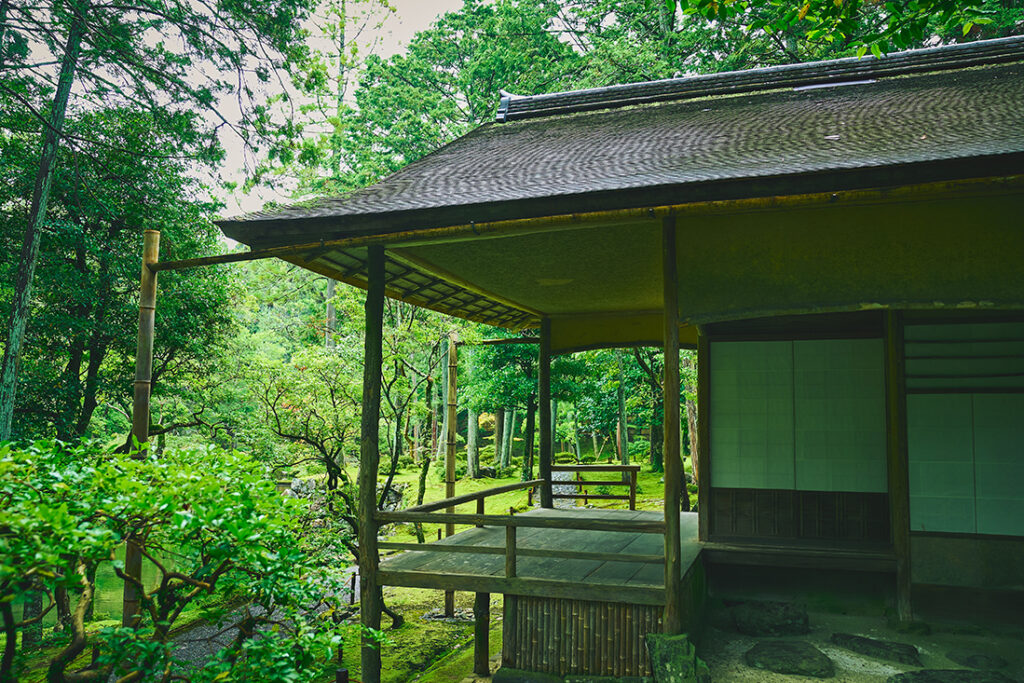
According to Rikyu’s disciple, Yamanoue Soji, Rikyu advocated a tea based on the term “once in a lifetime” (ichigo ni ichido) hospitality. Based on his master’s teaching, Yamanoue Soji writes in his Yamanoue Sōji Ki that the host should entertain the guest as if the tea ceremony party would only occur once in a lifetime. Ichigo comes from a Buddhist term that means “from one’s birth to one’s death,” and ichido means “once.” Later, in the mid-19th century, Ii Naosuke, the 19th Century Daimyo known for his devotion to tea, restates it as the phrase we know now, “once in a lifetime encounter” (ichigo ichie) which became almost synonymous with tea ceremony hospitality.
Ichigo ichie expresses the importance of treasuring the unique and unrepeatable nature of each moment, for no moment in life is repeatable. The guests may be the same, even the utensils may be the same, but the world will have changed, and each participant will have changed a little since the last gathering, so past gatherings can never be replicated.
Each moment in the tea ceremony is always treated as a once-in-a-lifetime experience. But this is expressed not only in the devotion of the host to providing the best possible hospitality to the guest, but also in the way in which the guests must appreciate the flawless hospitality of the host and express that in their dialogue with the host. The tea ceremony is only successful when both host and guests enter into a kind of unwritten social contract to participate fully and with the utmost sincerity.
What if we think of the ichigo ichie not only as a way of entertaining guests but also as a way of life? After all, not only the moments of special gatherings, but also every moment of our lives passes, never to return. And we can be completely sincere in every moment of every encounter with every person we meet, not just the guests of our parties or the hosts who invite us to parties.
Thinking of the legacy of Sen no Rikyu at Saihoji, let’s vow to live a life where every moment is lived to the full, and where, by turns as host and by turns as guest, we know that the way to have a once in a lifetime encounter is about making a commitment to participate in and be fully present in every moment. The beginning of this ichigo ichie journey is Saihoji, but it will continue also from the moment that we leave the garden and return to the magic and wonders of everyday life.
You can read more about ichigo ichie from here.
Peter MacMillan
Peter MacMillan is a prize-winning translator, scholar, poet, and President of The Moon is a Boat Co., Ltd.
His translation, One Hundred Poets, One Poem Each (Hyakunin Isshu), was published in 2008, winning prizes in both Japan and the United States. After that, he completed an English translation of The Tales of Ise (Ise Monogatari), which was published by Penguin in 2016. He has also published a collection of poetry entitled Admiring Fields.
Awards:
Recipient of the Donald Keene Center Special Prize for the Translation of Japanese Literature
Recipient of the 44th Special Cultural Translation Prize from the Japan Society of Translators
Nominated for the PEN Award for Poetry Translation for the English translation of The Tale of Ise (Ise no Monogatari)
